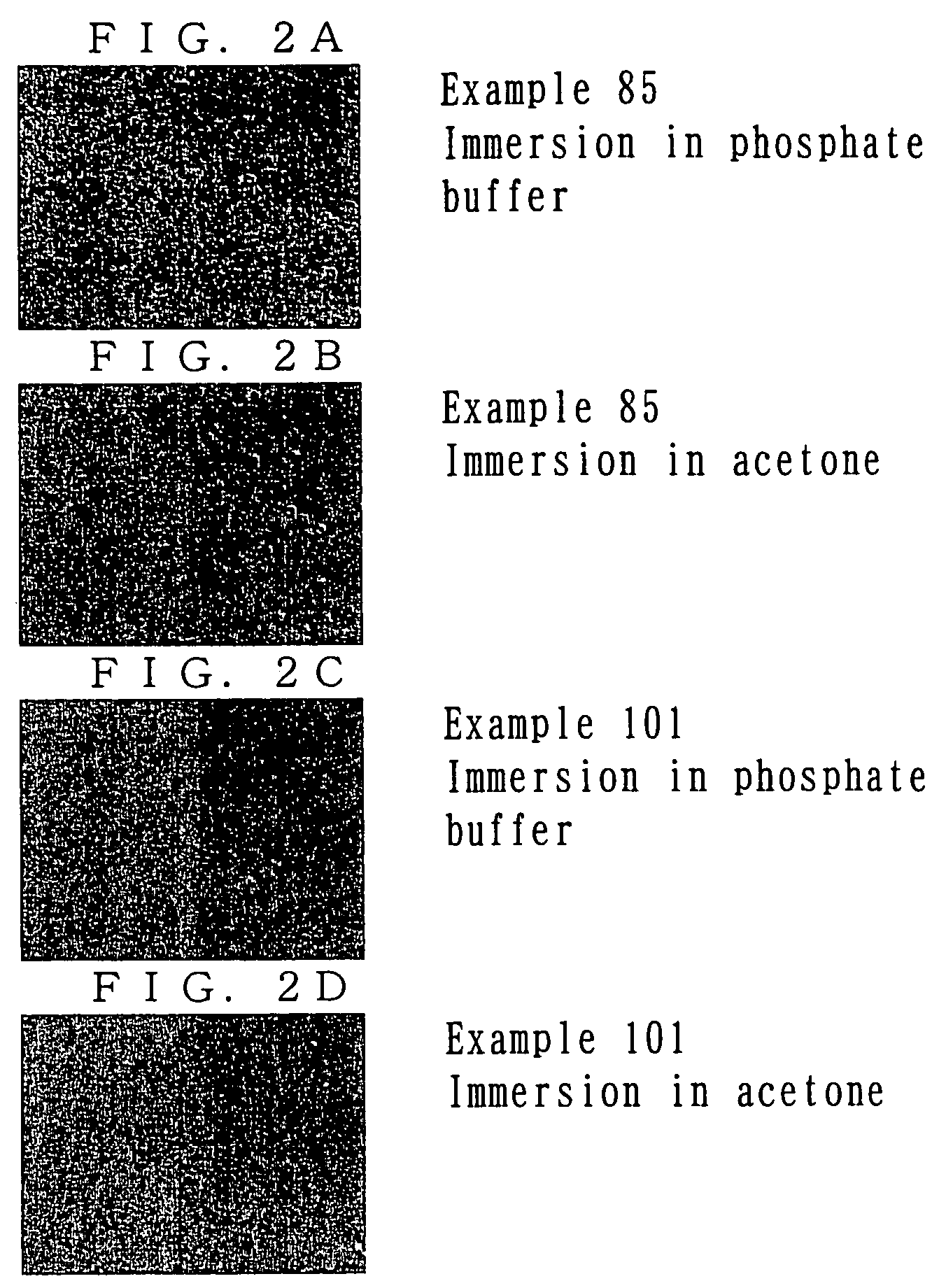Photosensitive resin, photosensitive composition and photo-crosslinked structure
a photosensitive resin and crosslinked technology, applied in the field of photosensitive resins, can solve the problems of affecting the hydrophilicity of the substrate surface, affecting the stability of the hydrophilic surface of the compound, and the inability to achieve sufficient film strength and hydrophilic surface stability of the crosslinked structure obtained from the compound
- Summary
- Abstract
- Description
- Claims
- Application Information
AI Technical Summary
Benefits of technology
Problems solved by technology
Method used
Image
Examples
example 1
Synthesis of Photosensitive Resin A
[0072]Polyethylene glycol-diamine (product of Nippon Oil & Fats Co., Ltd., number average molecular weight of 1,000) (7.9 g), the aforementioned photo-functional compound 4 (10.0 g, which is 2.0 equivalents by mole of amine groups of polyethylene glycol-diamine), tetrahydrofuran (THF) (70 g) were mixed, and the mixture was allowed to react at 25° C. for 18 hours. After completion of reaction, THF was removed under reduced pressure. Subsequently, the reaction mixture was partitioned and extracted with water (50 g) and ethyl acetate (50 g). After removal of the organic layer, another aliquot (50 g) of ethyl acetate was added, and partition / extraction was repeated. After the mixture had been allowed to stand, the mixture was separated into three phases. The thus-obtained lowest oil layer was lyophilized, to thereby yield 7.2 g of photosensitive resin A represented by formula (a) below (n=23). The thus-produced photosensitive resin A was identified thr...
example 2
Synthesis of Photosensitive Resin B
[0074]The procedure of Example 1 was repeated, except that polyethylene glycol-diamine (product of Nippon Oil & Fats Co., Ltd., number average molecular weight of 1,000) (13.1 g) and the aforementioned photo-functional compound 4 (10.0 g, which is 1.2 equivalents by mole of amine groups of polyethylene glycol-diamine) were used, to thereby yield 13.2 g of photosensitive resin B represented by the above formula (a) (n=23). The thus-produced photosensitive resin B was identified through 1H-NMR on the basis of a proton peak attributed to methylene chains of polyethylene oxide (3.5 ppm) and proton peaks attributed to aromatic rings of photo-functional compound 4 (6.8 ppm to 8.7 ppm). The percent introduction of photo-functional compound 4, as calculated from the ratio between integral peak intensities, was 72%.
example 3
Synthesis of Photosensitive Resin C
[0075]The procedure of Example 1 was repeated, except that polyethylene glycol-diamine (product of Nippon Oil & Fats Co., Ltd., number average molecular weight of 2,000) (7.9 g) and the aforementioned photo-functional compound 4 (6.0 g, which is 2.4 equivalents by mole of amine groups of polyethylene glycol-diamine) were used. In partition / extraction, the aqueous phase was washed twice with an organic phase, and the washed aqueous phase was lyophilized, to thereby yield 7.0 g of photosensitive resin C represented by the above formula (a) (n=45). The thus-produced photosensitive resin C was identified through 1H-NMR on the basis of a proton peak attributed to methylene chains of polyethylene oxide (3.5 ppm) and proton peaks attributed to aromatic rings of photo-functional compound 4 (6.8 ppm to 8.7 ppm). The percent introduction of photo-functional compound 4, as calculated from the ratio between integral peak intensities, was 96%.
PUM
| Property | Measurement | Unit |
|---|---|---|
| static contact angle | aaaaa | aaaaa |
| particle size | aaaaa | aaaaa |
| pH | aaaaa | aaaaa |
Abstract
Description
Claims
Application Information
 Login to View More
Login to View More - R&D
- Intellectual Property
- Life Sciences
- Materials
- Tech Scout
- Unparalleled Data Quality
- Higher Quality Content
- 60% Fewer Hallucinations
Browse by: Latest US Patents, China's latest patents, Technical Efficacy Thesaurus, Application Domain, Technology Topic, Popular Technical Reports.
© 2025 PatSnap. All rights reserved.Legal|Privacy policy|Modern Slavery Act Transparency Statement|Sitemap|About US| Contact US: help@patsnap.com



